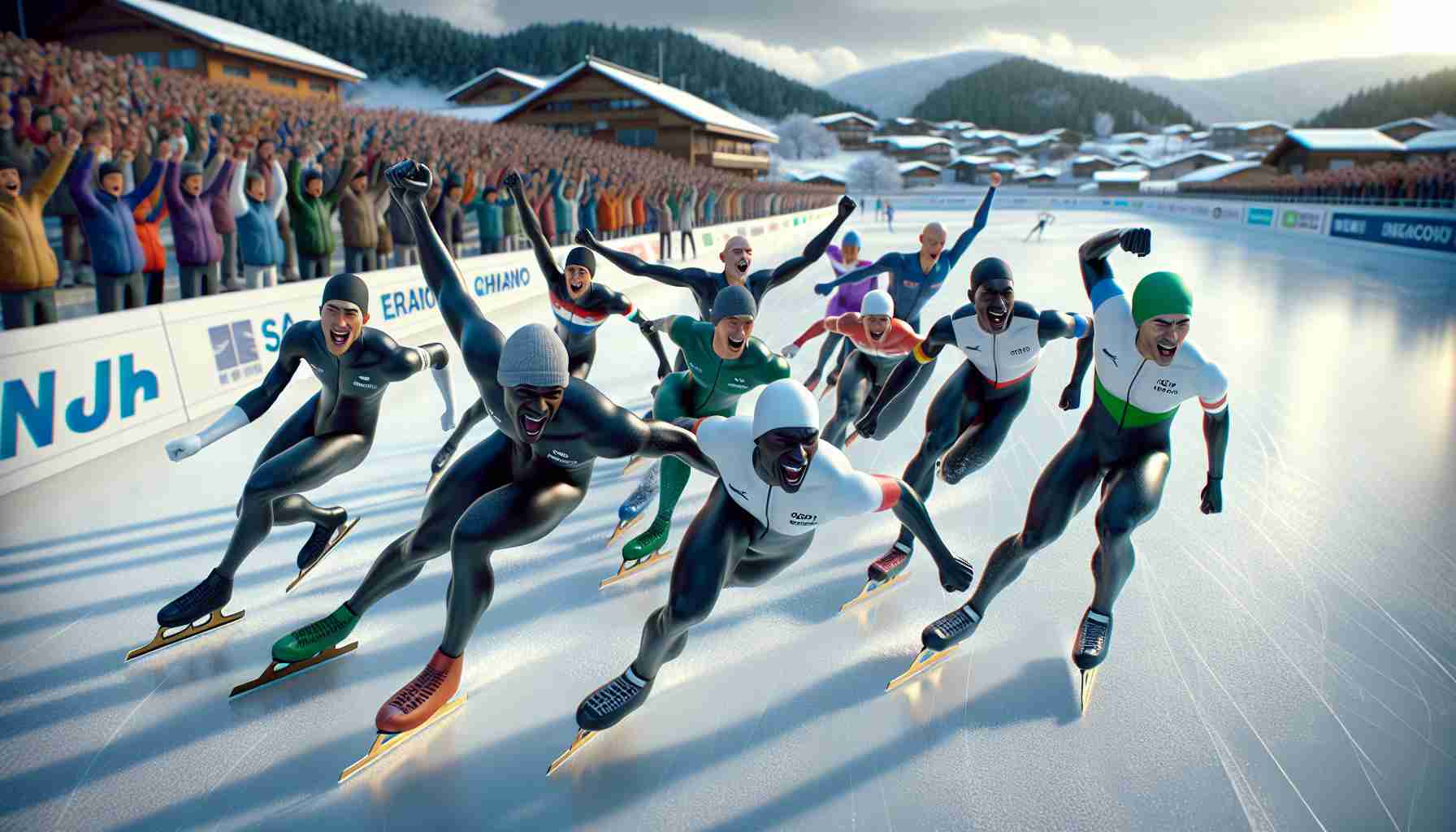In an impressive display of athletic prowess, American speed skaters Erin Jackson and Kimi Goetz stole the spotlight at the World Cup season opener in Nagano, Japan.
Erin Jackson, an Olympic champion, showcased her incredible speed and skill by claiming victory in the women’s 500m event. Her performance was nothing short of stellar, as she crossed the finish line with a remarkable time of 37.78 seconds, setting the bar high for competitors worldwide.
Kimi Goetz, another rising star from the United States, also made waves on the international stage. She delivered a determined and powerful race, securing a spot on the podium with her third-place finish. Her achievement highlights a strong presence of American talent in the sport of speed skating.
These outstanding performances in Nagano demonstrate the dedication and hard work of these American athletes. Erin Jackson’s victory reaffirms her status as one of the top contenders in the sport, while Kimi Goetz’s podium finish marks her as a formidable competitor to watch in future events.
As the World Cup season continues, all eyes will be on Jackson and Goetz as representatives of America’s potential to dominate in international speed skating.
The Unforeseen Impact of Speed Skating Excellence on Technology and Society
The spotlight on American speed skaters Erin Jackson and Kimi Goetz at the World Cup in Nagano offers more than just a glimpse of athletic excellence—it unexpectedly sheds light on broader technological advancements and societal impacts.
Speed skating, like many high-performance sports, is not just about physical ability; it includes cutting-edge technology in equipment design and data analytics. The remarkable performances of athletes such as Jackson and Goetz demonstrate the hidden interplay between sports and technological innovation.
Advancements in Equipment Design
The success of athletes in speed skating heavily relies on the continual refinement of their gear. Innovations such as improved aerodynamic suits and cutting-edge skate designs enhance performance by reducing drag and increasing speed. These advancements are not isolated to sports clothing and accessories but can trickle down to sectors like wearable technology in healthcare, where similar principles are used to monitor heart rates and improve ergonomics.
Data Analytics in Sports
The performances of Jackson and Goetz bring attention to the increasing use of data analytics in sports. Coaches and athletes now have access to detailed metrics on speed, stride length, and energy output, which help optimize training programs. Could these techniques be transferable to other fields, such as workplace productivity or educational methodologies?
Facilitating Global Interest
These achievements stir international interest and inspire enthusiasm for speed skating, affecting Olympic funding and encouraging diverse participation in sports. When elite athletes perform exceptionally, it can shift public interest and inspire future generations, potentially increasing diversity in a traditionally homogeneous sport.
Are there ethical considerations in technological enhancements in sports? Is innovation leveling the playing field, or creating greater disparity between countries with differing resources? These questions highlight broader controversies in technology’s role in sports and society.
Advantages and Disadvantages
The integration of technology in sports like speed skating offers advantages such as enhanced performance, greater accuracy in scoring, and improved safety for athletes. On the flip side, the reliance on technology could potentially undermine the purity of the sport, leading to debates about fairness and accessibility. Is it fair if only athletes from wealthy nations can access such advanced technology?
To explore these exciting intersections further, you can delve into the world of sports and technology advancements through platforms that discuss these trends in detail, like Olympics and Nature.
As we continue to marvel at the accomplishments of athletes like Erin Jackson and Kimi Goetz, we are also reminded of the critical role of technology and its unforeseen effects on human development and society at large. This fusion of human effort and technological enhancement paints an exciting yet complex picture of the future of sports and beyond.
